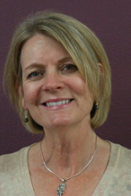The Institute of Child Development (ICD) recently launched a third track in its BS in early childhood program. The new track, which focuses on early and elementary education, gives students the option to teach older grades, preparing them to teach in a public school setting from preschool and kindergarten through 6th grade.
We chatted with Early Childhood Licensure Coordinator Ann Ruhl Carlson and Undergraduate Academic Advisor Meghan Allen Eliason to learn more about the new track. Responses edited for length and clarity.
What prompted the creation of the early and elementary education track within ICD’s BS in early childhood program?
Ruhl Carlson: The foundations of education track in the BS in early childhood program prepares students to enter the one-year, initial licensure MEd program. Upon completion of the MEd program, students can be recommended for a Minnesota state teaching license in early childhood. The elementary education BS program functions in much the same way. The early childhood teaching license (birth – grade 3) and the elementary education license (kindergarten – grade 6) overlap in their scope, in the K-Grade 3 period. The early childhood education MEd licensure students take many of the same courses as the elementary education students do. We were finding that it was an asset in the job search for our students to have secured both licenses. The elementary education faculty were willing to accommodate our students, for which we are very grateful! It has been a very positive partnership.
Allen Eliason: Students have been doing this same path to pursue two licenses for years now but more on their own; it was not a formal academic program. Therefore, the requirements could be unclear and much of the responsibility was on the students and advisors to connect individually to figure out the appropriate courses. Now that we have an officially approved track, everyone can be on the same page and work directly from a list of required courses in their degree progress reports.
How does this new track prepare students for work in the classroom?
Ruhl Carlson: This track requires students to have a few additional courses in math, science, art, and physical education, which prepare them to teach older elementary aged children. These courses are aligned with the teaching standards for those licensed to teach kindergarten through grade 6.
Allen Eliason: Students doing this track take some additional content courses to prepare them to lead a variety of academic subjects within their elementary classroom. This added knowledge complements the early childhood and elementary teaching methods courses done by all students seeking licensure in our department.
Which students is this program best suited for?
Ruhl Carlson: This is a wonderful program for students who are planning to teach in the public schools and who are drawn to work with younger children. Students receive a solid foundation in developmental psychology, which grounds their teaching in developmentally appropriate, child-centered teaching practices, which have been demonstrated to improve educational outcomes for children. I am so gratified to see these practices in use when I observe my teaching candidates in their student teaching placements in the public schools! The program prepares teachers to work with children in a broad age span, and provides credentials that open additional employment opportunities.
Allen Eliason: This program can also be great for students who were initially considering the elementary education major, but prefer to have additional coursework focused on development. Through this track they take most of the same courses as an elementary ed major, and still for both licenses, but also enjoy our child development and psychology coursework to better understand how children learn and grow.





